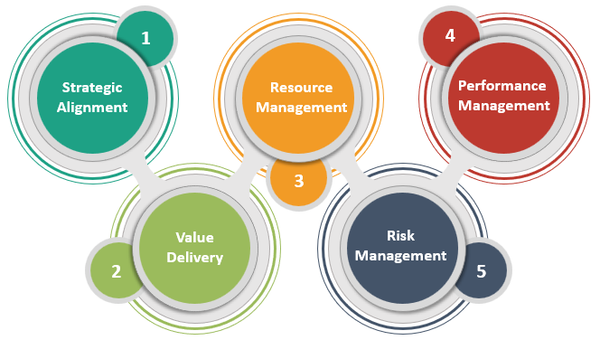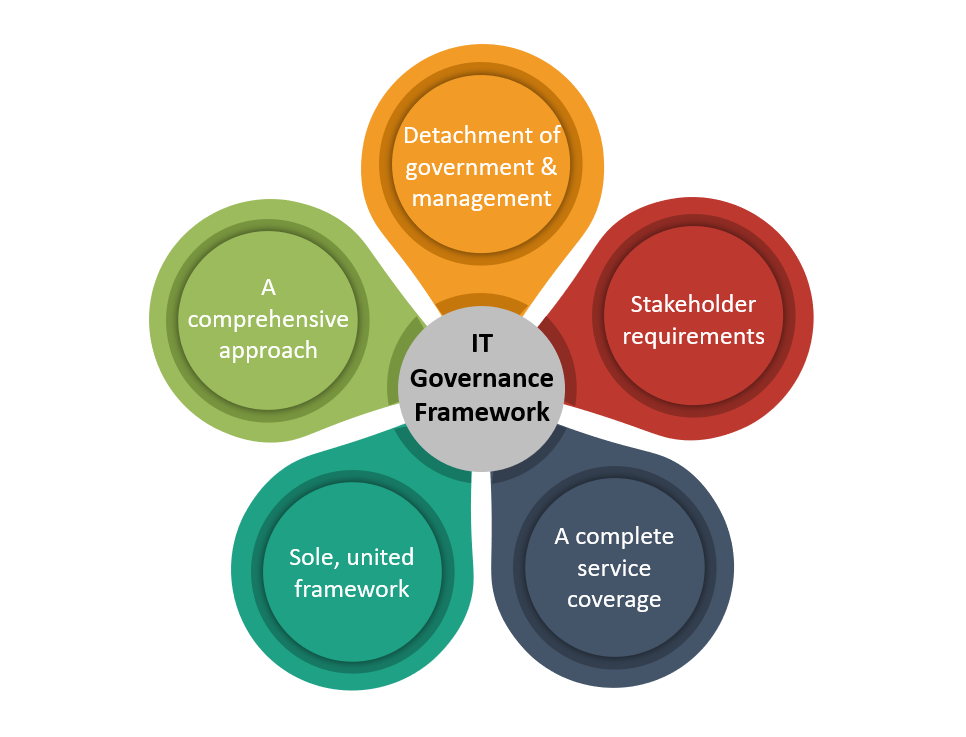Everything You Need To Know About IT Governance, Its Framework and Best Practices
What is IT Governance?
Have you ever wondered how some organizations experience seamless operations backed by coherent team members, efficient work processes, and achievement of goals? It is because of a diligent IT team. IT or Information Technology is often considered one of the backbones of an organization that helps achieve company goals. If there is a driving force behind the triumph of the IT department, it is IT Governance. What is that?

IT Governance can be defined as an approach that promises effective and efficient implementation of IT works. It is through IT governance that the majority of your organizational goals are achieved. IT demand governance or ITDG is the procedure through which the organization streamlines its evaluation, selection, prioritization, and funding of competing IT investments, examines their incorporation, and draws measurable business benefits. ITDG is primarily a business acquisition decision-making and management process.
Why is IT Governance Important?
Organizations cannot just expect IT systems to function faultlessly on their own without the help of a streamlined strategy. There is an immense requirement for a process that helps with regulation, monitoring, and implementation of the various efforts contributed by the IT systems.
IT governance is responsible for dealing with the performance and hazard management of all IT systems. This way, it generates value for the organizations and guarantees that all the business objectives are on the perfect trail.
The need for IT governance can be noticed in organizations, especially when there is a tiff between the organizational interests and IT system managers. Therefore, this approach is essential in bridging the gap between the positive implementation of the key responsibilities and the CEO or CIO’s interests.
IT governance holds great importance since it involves every member of a company, including key stakeholders, executive management, board members, staff, customers, regulators, and also investors.
What are IT Governance Frameworks?
In simplistic terms, the IT governance framework can be explained as a framework describing all the approaches that an organization can observe, control, and execute. It is responsible for offering guidelines and measures for tactfully handling all the IT resources and processes in a company.
IT governance framework perfectly designs the roadmap, following it up by analyzing the performance of the IT systems. Additionally, it is also functional in providing insights into the performance of the IT department. It further acquires legal and regulatory submissions concerning IT.
The IT governance framework generally offers reference models for:
- IT processes
- Input and output of processes
- Key process objectives
- Performance measurement methods
An IT governance framework is important to protect the company. The current scenario deals with endless transactions, which immediately increases the need for extra security to protect people from cyberattacks, and unethical behavior. Quite a vast amount of personal information flows freely and is at stake. If there is anything that can secure it by offering strict security measures, it is an IT governance framework. Companies use these frameworks to secure themselves, stakeholders, and clients.
What is a Top IT Governance Framework?
Numerous IT governance frameworks are available, but the one often considered the best is COBIT or Control Objectives for Information and Related Technologies. This is a product of the Information Systems Audit and Control Associated, ISACA, and curated specifically for enterprise IT. COBIT is often regarded as the top IT governance framework among industries.
Apart from COBIT, there are other renowned frameworks like ITIL, COSO, CMMI, FAIR, etc. But let us now focus on COBIT and its status as a top IT governance framework. COBIT is the phenomenon that guarantees a smooth workflow among all the IT systems, and it also ensures that the performance is done to the fullest level. COBIT was founded in 1996, and since then, there has been no turning back. It has experienced a complete evolution adhering to new trends, technologies, and security needs.
The COBIT framework includes numerous governance and management objectives suited for IT governance. The system is adaptable and tailor-made and closely examines safety levels, risk management, and information governance.
The COBIT framework is organized by including five fundamental principles listed below.

What are the IT Governance Best Practices?
No governance is successful without a plan, and the following practices will guide you in making a strategic IT governance plan. After gaining quite some knowledge about IT governance, let us study some of the best IT governance practices.
#1 Make a Group of Key Stakeholders
Having a collaboration between IT people and the organization is of utmost importance. Forming a group with all employees and stakeholders is necessary to understand how data is handled. This committee can serve as a foundation for discussions about the business objectives.
#2 Characterizing Business and Compliance Necessities
There are certain industry-specific regulations based on which organizations make their rules and retention policies. It is in the initial stages that IT governance committees recognize their organization's individualistic criteria. It is to be noted that every organization is different and that the business compliance requirements would also vary.
#3 Refurbish Policies for Remote Work
The pandemic has urged organizations to generate data which had been previously reserved in servers and enterprise content management systems. Many organizations shifted to cloud storage, offering vast content distribution across regions. The pandemic has resulted in more utilization of Microsoft OneDrive, Dropbox, and Box. The IT governance needs to be adjusted according to this shift.
#4 Describe Reports and Notifications to Monitor Compliance
After the organization has devised its content policy, it needs to curate specific alerts and reports to maintain observability of end-user policy compliance. These reports and alerts may comprise information about user policy violations, content deletion, sensitive content, and so on. The IT governance plan also needs to know how to handle these instances.
To Sum It Up
IT governance plays a major role in determining the operations of the business. It is helpful in constant observation and plan review. Organizations can set boundaries to data access because of IT governance.




